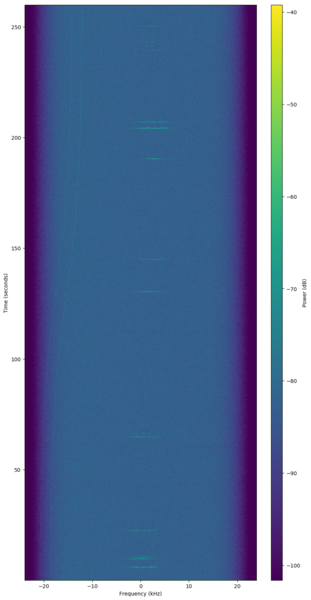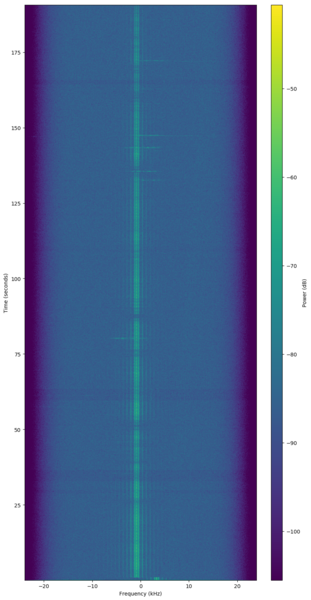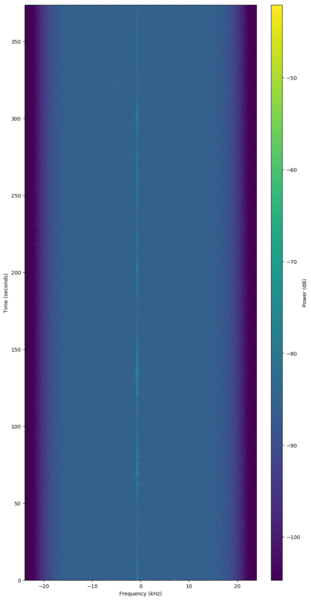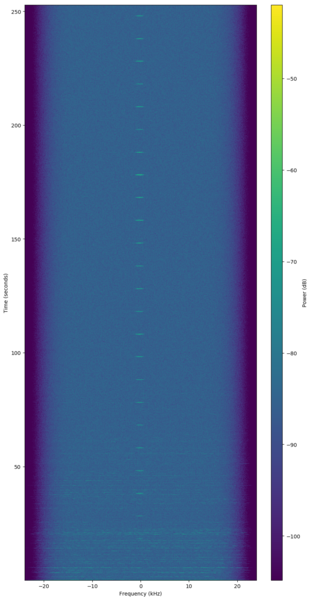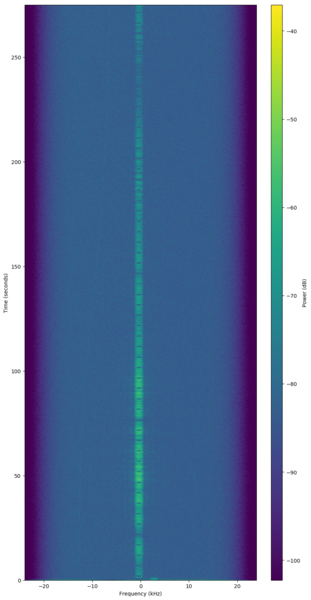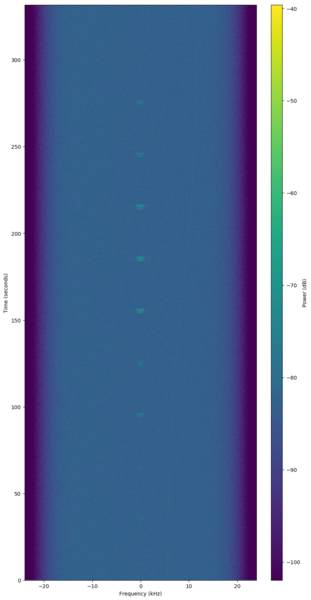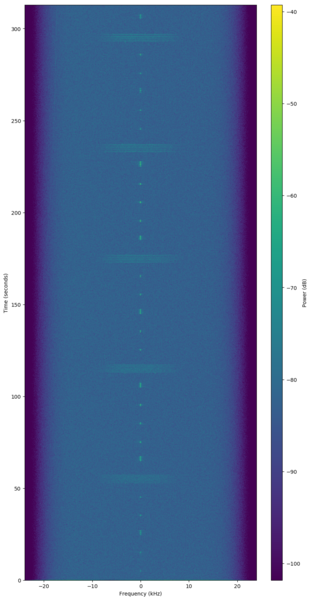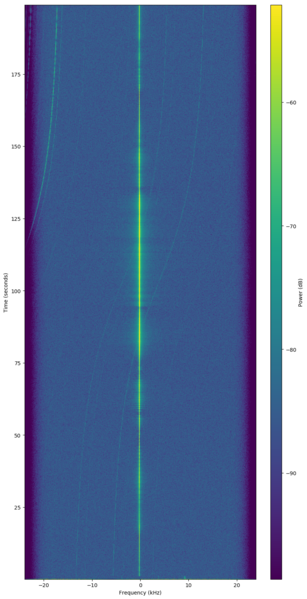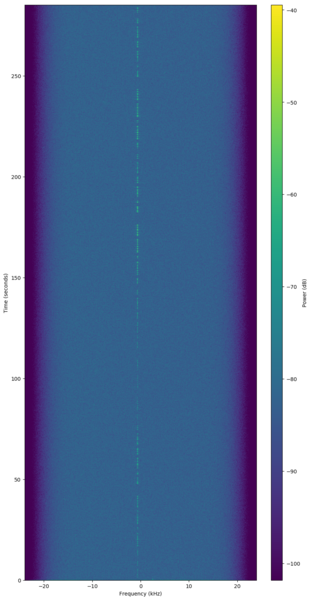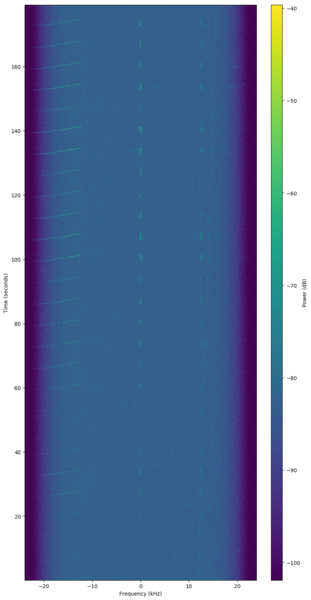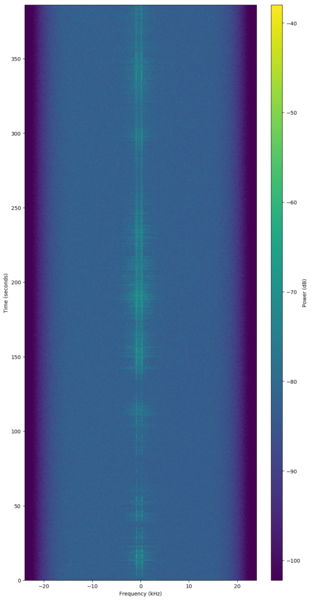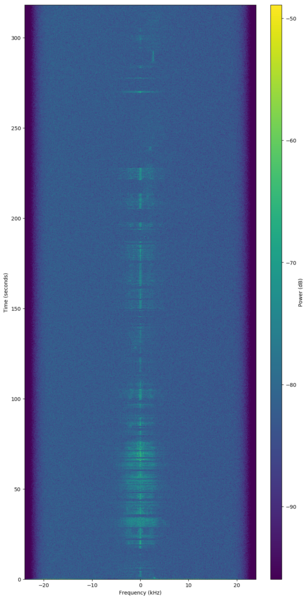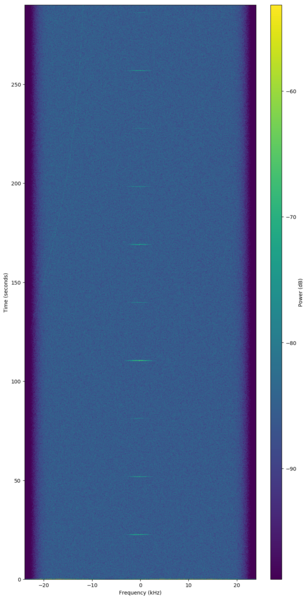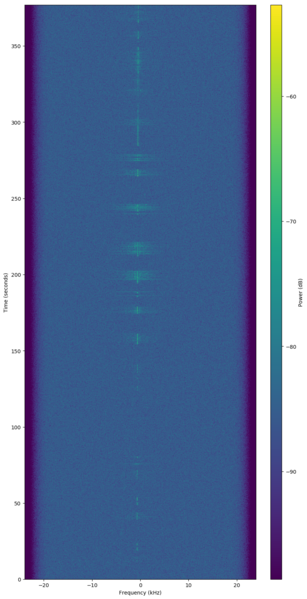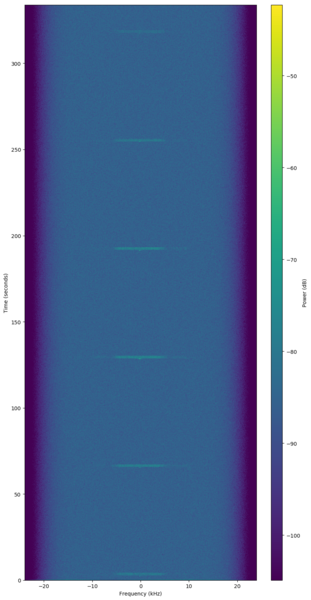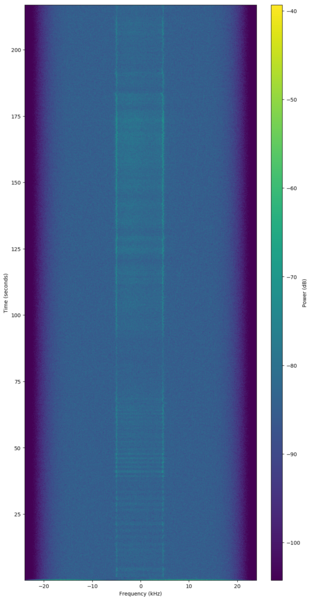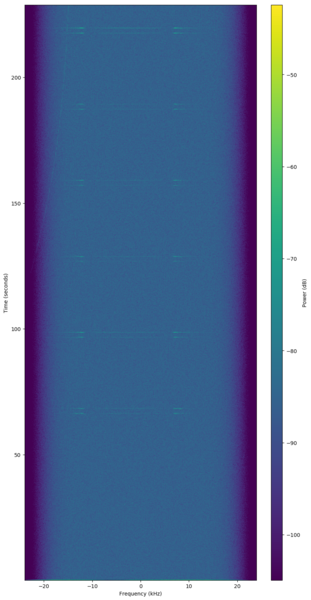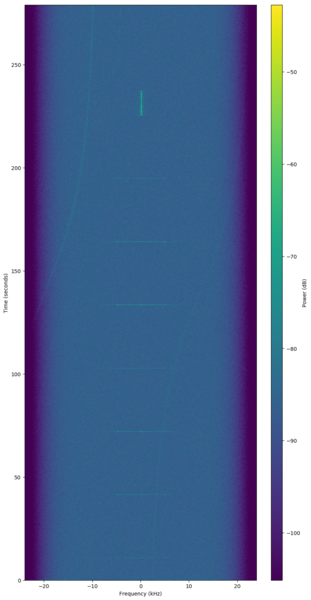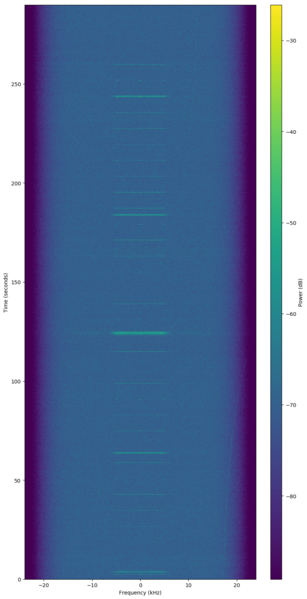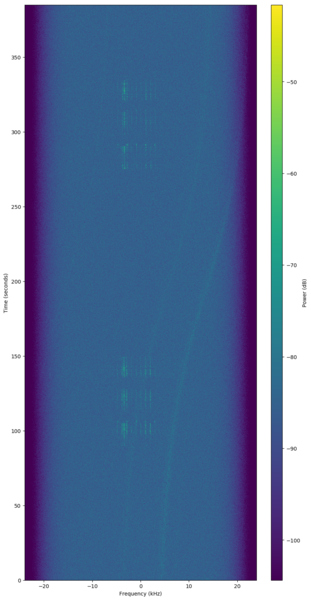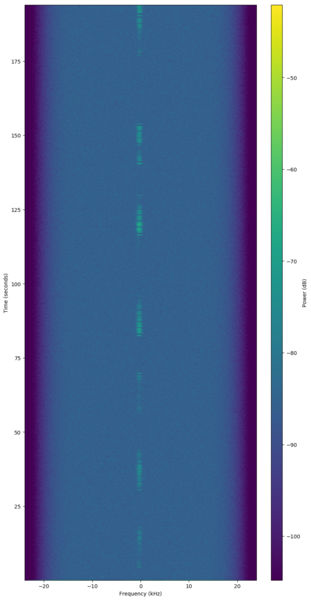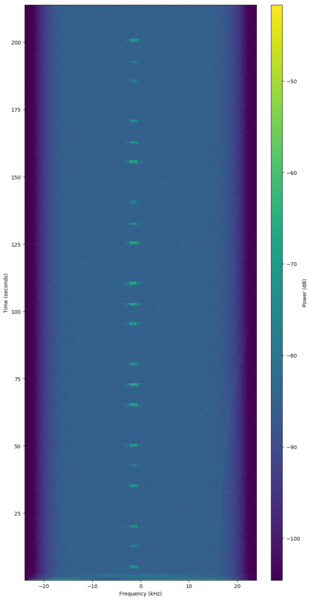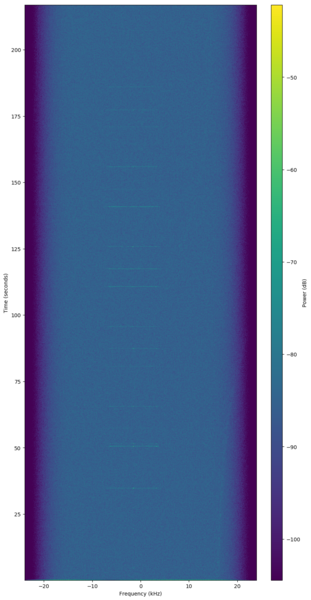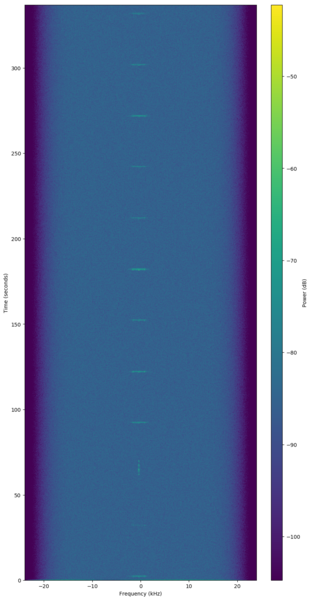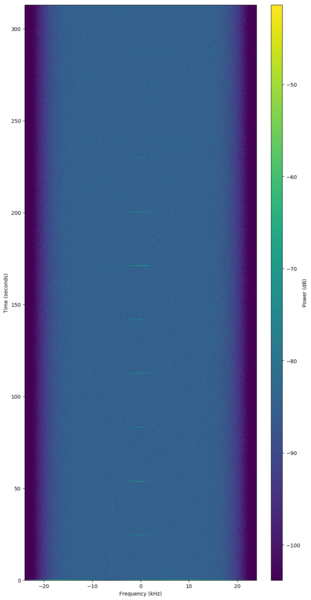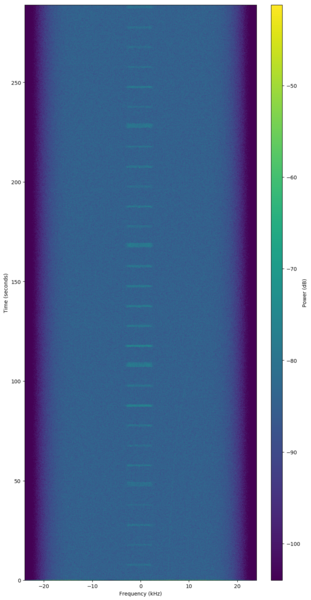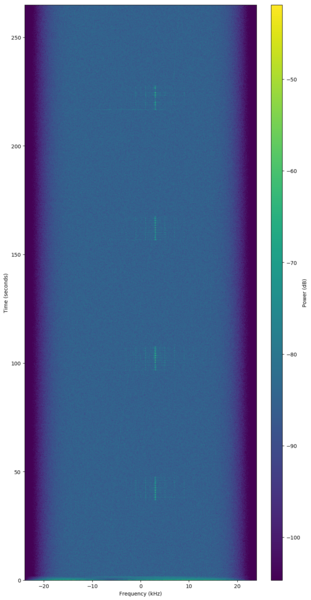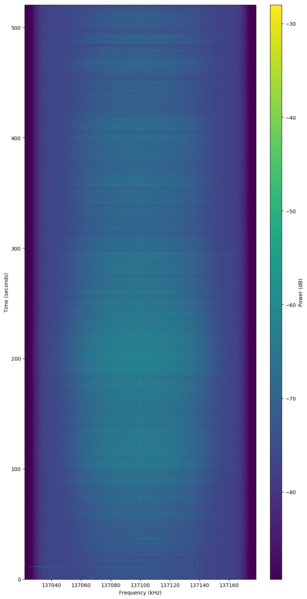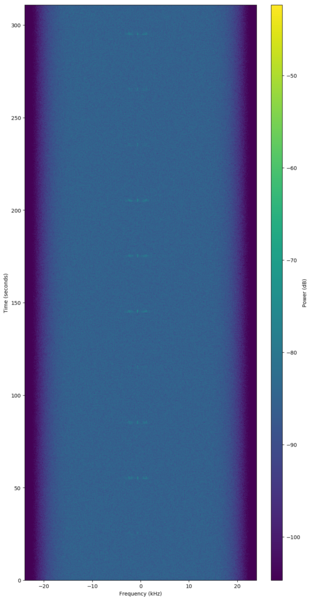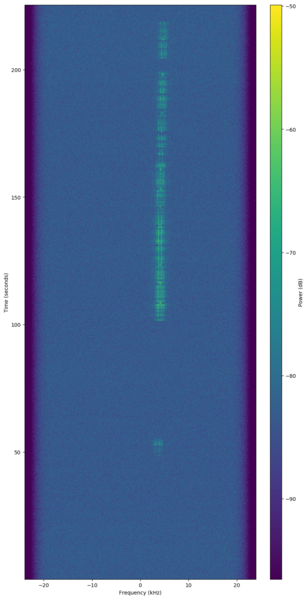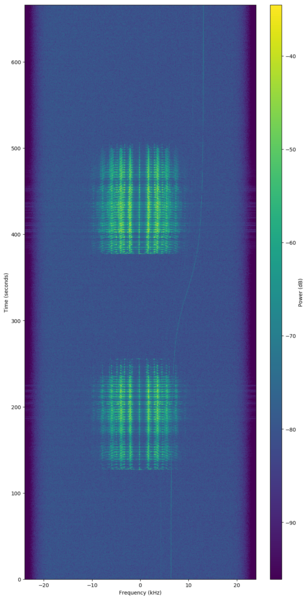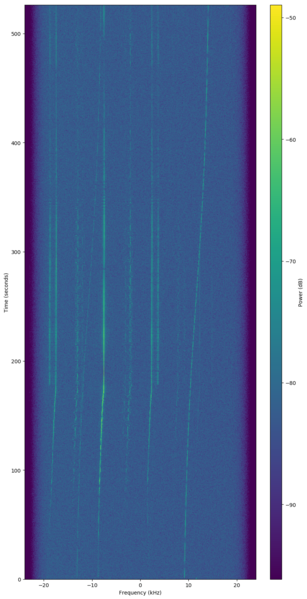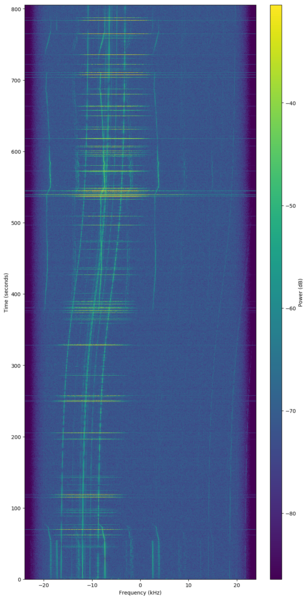Difference between revisions of "Observations"
From SatNOGS Wiki
m (Librespace1 moved page Taxonomy of Observations to Observations: Shorten name) |
(current modes list, five new modes) |
||
| (One intermediate revision by the same user not shown) | |||
| Line 8: | Line 8: | ||
The SatNOGS DB API can generate the [https://db.satnogs.org/api/modes/ current list of modes]. | The SatNOGS DB API can generate the [https://db.satnogs.org/api/modes/ current list of modes]. | ||
| − | At the time of writing, there are | + | At the time of writing, there are 70 modes, listed below: |
<!-- | <!-- | ||
| Line 22: | Line 22: | ||
* [[AFSK1k2]] | * [[AFSK1k2]] | ||
* [[AFSK9k6]] | * [[AFSK9k6]] | ||
| + | * [[AFSK_SALSA]] | ||
| + | * [[AFSK_S-Net]] | ||
* [[AFSK]] | * [[AFSK]] | ||
* [[AHRPT]] | * [[AHRPT]] | ||
| Line 41: | Line 43: | ||
* [[DUV]] | * [[DUV]] | ||
* [[FFSK1k2]] | * [[FFSK1k2]] | ||
| + | * [[FFSK]] | ||
* [[FMN]] | * [[FMN]] | ||
* [[FM]] | * [[FM]] | ||
| Line 48: | Line 51: | ||
* [[FSK9k6]] | * [[FSK9k6]] | ||
* [[FSK19k2]] | * [[FSK19k2]] | ||
| + | * [[FSK40k]] | ||
* [[FSK]] | * [[FSK]] | ||
* [[GFSK1k2]] | * [[GFSK1k2]] | ||
| Line 72: | Line 76: | ||
* [[MSK19k2]] | * [[MSK19k2]] | ||
* [[MSK38k4]] | * [[MSK38k4]] | ||
| + | * [[MSK]] | ||
* [[OFDM]] | * [[OFDM]] | ||
* [[OQPSK]] | * [[OQPSK]] | ||
| Line 128: | Line 133: | ||
== See also == | == See also == | ||
| + | * [[Observe]] | ||
* [[Operation]] | * [[Operation]] | ||
| − | |||
* [[Decode Telemetry and Packets]] | * [[Decode Telemetry and Packets]] | ||
* [[:Category:RF_Modes]] | * [[:Category:RF_Modes]] | ||
Latest revision as of 19:08, 18 February 2020
Introduction
Satellites use a variety of transmitters, frequencies, and modes (encodings). Similar equipment will produce similar observations. Satellites can have, and often do have, multiple transmitters and modes. Below are various categories of observations.
Transmitters
The SatNOGS DB API can generate the current list of transmitters.
Modes
The SatNOGS DB API can generate the current list of modes.
At the time of writing, there are 70 modes, listed below:
- AFSK1k2
- AFSK9k6
- AFSK_SALSA
- AFSK_S-Net
- AFSK
- AHRPT
- AM
- APT
- BPSK1k2
- BPSK2k4
- BPSK4k8
- BPSK9k6
- BPSK12k5
- BPSK14k4
- BPSK115k2
- BPSK400
- BPSK
- CERTO
- CW
- DQPSK
- DSTAR
- DUV
- FFSK1k2
- FFSK
- FMN
- FM
- FSK1k2
- FSK2k4
- FSK4k8
- FSK9k6
- FSK19k2
- FSK40k
- FSK
- GFSK1k2
- GFSK2k4
- GFSK4k8
- GFSK9k6
- GFSK19k2
- GFSK_Rktr
- GFSK
- GMSK1k2
- GMSK2k4
- GMSK4k8
- GMSK9k6
- GMSK19k2
- GMSK
- HRPT
- LRPT
- LSB
- MFSK
- MSK1k2
- MSK2k4
- MSK4k8
- MSK9k6
- MSK19k2
- MSK38k4
- MSK
- OFDM
- OQPSK
- PSK4k8
- PSK31
- PSK63
- PSK
- QPSK31
- QPSK38k4
- QPSK63
- QPSK
- SSTV
- USB
- WSJT
Example Waterfalls
Below are waterfalls depicting various modes.
See also
- Observe
- Operation
- Decode Telemetry and Packets
- Category:RF_Modes
- List of amateur radio modes.
- SatNOGS DB stats on transmitters, modes, and bands.
- Adding a new data decoder to SatNOGS.
Note, for some modes there are a variety of baud rates and other factors that make it so two identical modes might not necessarily look similar. For further comments on the variety of modes, see:
